- Counteroffensive Pro
- Posts
- Ukraine EW friendly fire problem – and how to fix it
Ukraine EW friendly fire problem – and how to fix it
Up to 60 percent of Ukraine’s total drone losses stem from friendly jamming on the battlefield.

BLUF: Electronic warfare in Ukraine constantly adapts to new battlefield realities, causing its own capabilities to sometimes backfire and interfere with other Ukrainian units. Coordination is key to avoiding such friendly jamming, but only unified efforts across the military can make that a reality.
NEW: The Verkhovna Rada adopted three out of four draft laws in the first reading to establish Defence City, a new special economic zone for defense companies.
Teletactica, a developer of jamming-resistant communication systems, raised $1.5 million in investments from MITS Capital, Green Flag Ventures. Frontline sold a 10 percent stake to German drone maker Quantum Systems.

Sponsored by:
THE BIG STORY: How Ukraine can keep its own EW from getting in the way
Ukraine has constantly upped its electronic warfare game to keep up with relentless changes on the battlefield, and these systems now play a decisive role in the war.
They are used for everything from protecting soldiers' vehicles to thwarting enemy attacks by jamming satellite navigation in Shahed kamikaze drones (see our previous report on Shahed interceptors).
Russia had greater jamming capabilities at the beginning of the full-scale invasion due largely to Soviet legacies in this space (read more about this history here).
But Ukraine has now more than caught up. Back in 2014, Ukraine had only four manufacturers of electronic warfare systems. Now there are over 300, Oleksii Chernyak, director of the Radioelectronic Alliance, told Counteroffensive.Pro.
However, only 17 of them have formal state contracts to supply the Ukrainian army. Many other EW manufacturers work directly with brigades or volunteers. Ukrainian laws allow charity funds to supply the Ukrainian army with equipment.
Thus individual soldiers or volunteers can supply the unit with EW, which in some cases is not registered as brigade property. Because of this, commanders may not even be aware of the presence of EW on the position – a case in which the surge of new technologies to the frontline may be causing unexpected blowback.
This creates an overabundance of different systems on the battlefield, where tools designed to counter Russian forces instead interfere with Ukrainian drones.
Such ‘friendly’ interference is the result of a lack of coordination between units. Commanders need to know where all the nearby EW stations are positioned and the frequencies on which they operate, Taras Andriiv, project manager at Babai, an electronic warfare systems maker, told Counteroffensive.Pro.
"We're constantly in touch with drone pilots, and they report that sometimes it's harder to fly through our own positions, where many different EW systems from different manufacturers are installed, than to reach the enemy and hit the target," said Andriiv.
Up to 60 percent of total drone loss is caused by friendly-fire jamming, according to Yaroslav Filimonov, CEO of Kvertus, an EW systems manufacturer. This friendly interference is a result of unregistered EW systems, he said.
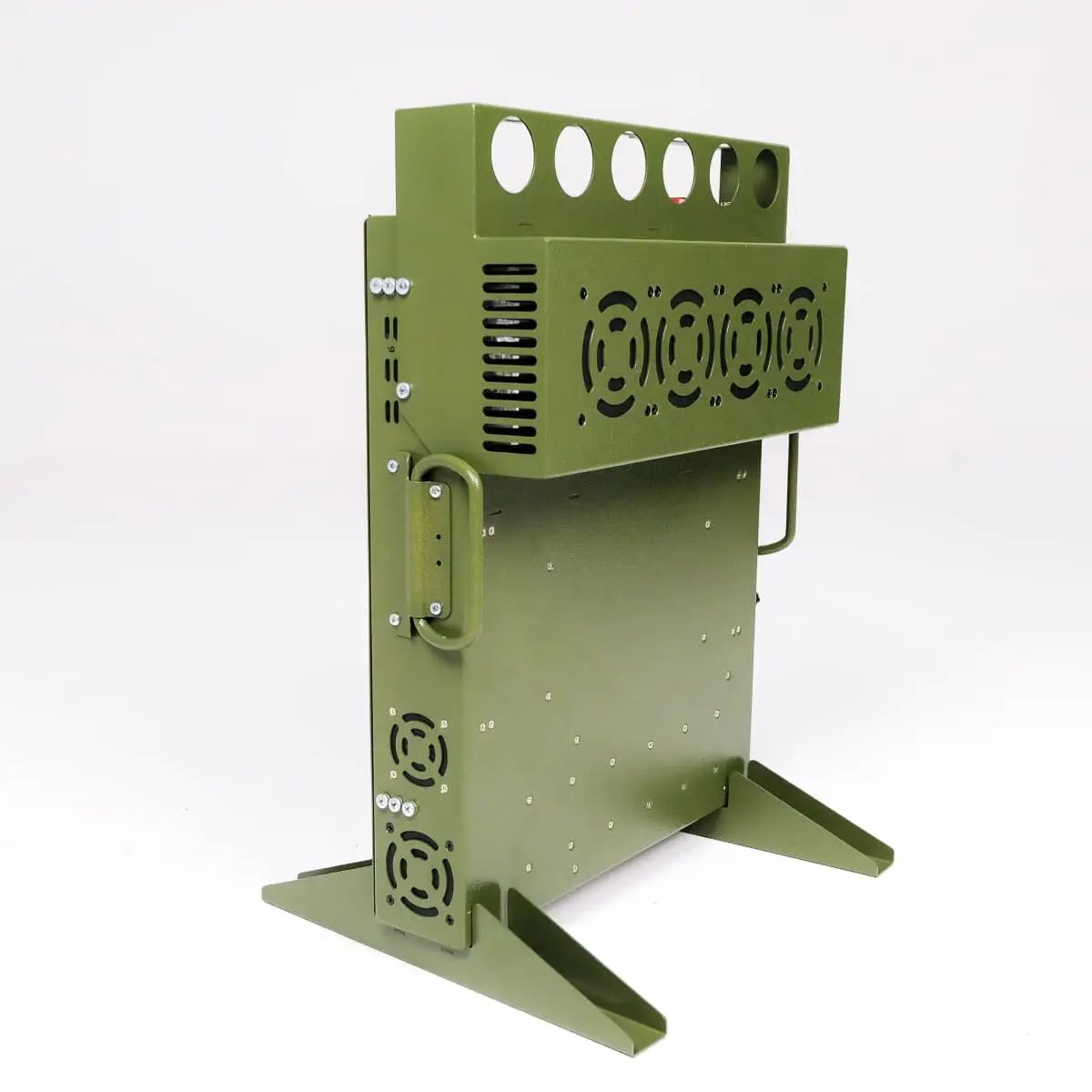
An EW system against FPVs – Babai 6M FPV. Photo taken from the manufacturer's website
With so many drones in use, there’s a lot of room for miscoordination.
In 2024 alone, the Armed Forces received 1.2 million drones of various types from the MoD. That’s not even counting the thousands of drones purchased directly from manufacturers by brigades and volunteers.
How EW works
Electronic warfare is a comprehensive set of measures, including:
Electronic reconnaissance – monitoring the radio spectrum to detect targets;
Signal suppression – creating a strong signal on a specific frequency that overrides control of an enemy device, such as a drone;
Signal spoofing – falsifying a signal, typically to interfere with navigation systems, including those controlled by satellite;
Protection and countermeasures – masking friendly frequencies to safeguard against the enemy’s electronic attacks, or automatically switching frequencies if the band is being jammed.
Take, for instance, an FPV drone flying on a frequency of 900 MHz. A radio channel is used to control the drone, so in order to make the drone lose control, an EW station must create interference in the 900 MHz range.
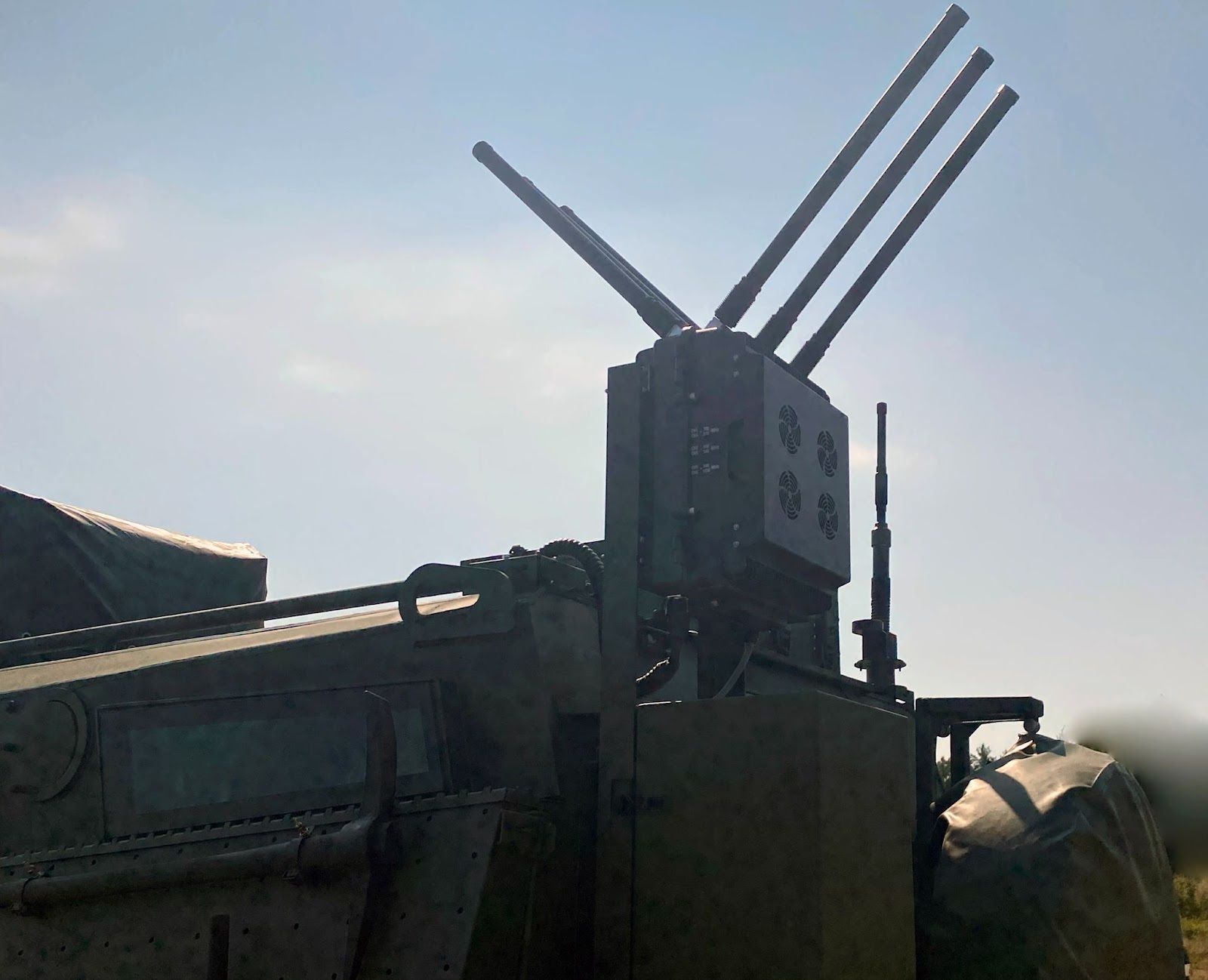
EW system on an armored vehicle. Photo by Counteroffensive.Pro
The problem of friendly jamming
Electronic warfare works effectively, without becoming a hindrance to friendly forces, only as an integrated system with clear coordination.
But with the growing number of different types of EW from various manufacturers in play, it’s almost inevitable for EW systems to be switched on at times without other units being aware.
Ukraine’s Air Force uses an automated system called ‘Virazh-planshet’ to monitor the drone situation in the air. Created at the Kharkiv National Air Force University, the system has laid bare the issue of friendly-fire interference.
Often, a friendly drone may show up in the system as hostile due to a lack of coordination, wrote Oleksandr Karpiuk (also known as Serg Marco), a serviceman in the 59th Separate Assault Brigade.
The end result, he said, is chaos.
"Constant and uncontrolled navigation suppression, parallel to Russian EW, leads to flight delays, sometimes for an hour, sometimes more. UAV can't acquire satellites, Starlinks can't position themselves," Marco wrote on Facebook last year.
Friendly fire can lead to the loss of a drone or any device that receives radio signals, such as radios with receivers. Avoiding the use of sensitive devices near EW antennas can help prevent this, Andriiv said, adding that Babai’s systems can be remotely controlled if connected to Starlink, a move intended to protect against such mishaps.
On the MoD level, there are no public discussions on EW friendly fire. However, Valerii Zaluzhnyi, the former Commander-in-Chief and current Ukrainian ambassador to the UK, has said that the army should integrate Pokrova, Grafit, and Quartz situational awareness systems, to improve coordination of EW and informational exchange on the frontline.
EW coordination is usually handled on the ground when information is exchanged laterally between units, said Charlie, commander of the 14th Separate UAV Regiment, in an interview. This is the only way to avoid such losses, but it’s often easier said than done on the battlefield, where troops are forced to move quickly and make snap decisions.
Basic military training includes general knowledge of electronic warfare, but the quality of it depends on each particular military center. To better understand EW, soldiers should take separate courses. Additionally, manufacturers often provide training to ensure the correct operation of their systems.
Apart from improving lateral communications, friendly fire can also be avoided by integrating both drone and EW systems into Delta, Ukraine’s situational awareness system, Filimonov from Kvertus told Counteroffensive.Pro.

Azimuth electronic intelligence system. Photo taken from Kvertus' website
Kvertus produces the Azimuth system, which detects drones across a broad frequency range at distances of up to 30 km. This allows units to check with each other, once a drone is detected, to determine if it's their drone or an enemy drone.
Another solution is to have maintenance specialists in each military unit configure EW systems so they don't suppress frequencies on which friendly drones operate, said Andriiv. A specialist in each EW unit should be responsible for performing this task to ensure the most effective coordination, he said.
Since the field is still so new, implementing these measures is often hampered by disorganization in the military. Because of this, there is a need for layered EW, similar to what is used in air defense, where systems are spaced out and each one is responsible for its own jurisdiction, Filimonov said.
The recently established Radio Electronic Alliance, which unites electronic warfare manufacturers, is a step towards streamlining the process. Alliance members can jointly create EW systems that adhere to unified standards, Chernyak said.
Check out our previous coverage to learn what else the alliance hopes to accomplish.
Friendly jamming poses a problem for the Ukrainian army, but there are straightforward solutions to solving it–provided there’s a military-wide effort to do so.
Sponsored Content:

Intelligence for Drones
DroneSec is an adversary drone threat intelligence company, offering an enterprise platform to military and law enforcement customers around the world. In particular, they specialize in technical information about Group 1-3 Unmanned Aircraft Systems.
Origin Story
What started as a passion project for CEO Mike Monnik – it was originally a Reddit forum about a decade ago – has become one of the world’s most powerful tools for assessing drone tactics, techniques and procedures (TTP) information all in one place. A daily operating system for drone warfare management, which pioneered the industry category of drone threat intelligence.
Impact in Ukraine
When Russia invaded Ukraine in 2022, DroneSec utilized the platform to release a playbook on drone warfare TTPs known as the “OPSEC Guide” to thousands of Ukrainian Forces as a collection of lessons learned from other adversaries and conflict zones, such as Syria and Myanmar.
“We knew that if you documented enough use cases, you could almost forecast what was going to come next and then hopefully build countermeasures before that occurred,” Monnik said.
DroneSec’s platform allows customers to monitor and analyze drone-related incidents, track threat actors, and access finished intelligence reports. Need custom information? DroneSec has a feature to request specific information on topics of interest, and access shared RFI’s from the Intelligence Community (IC).
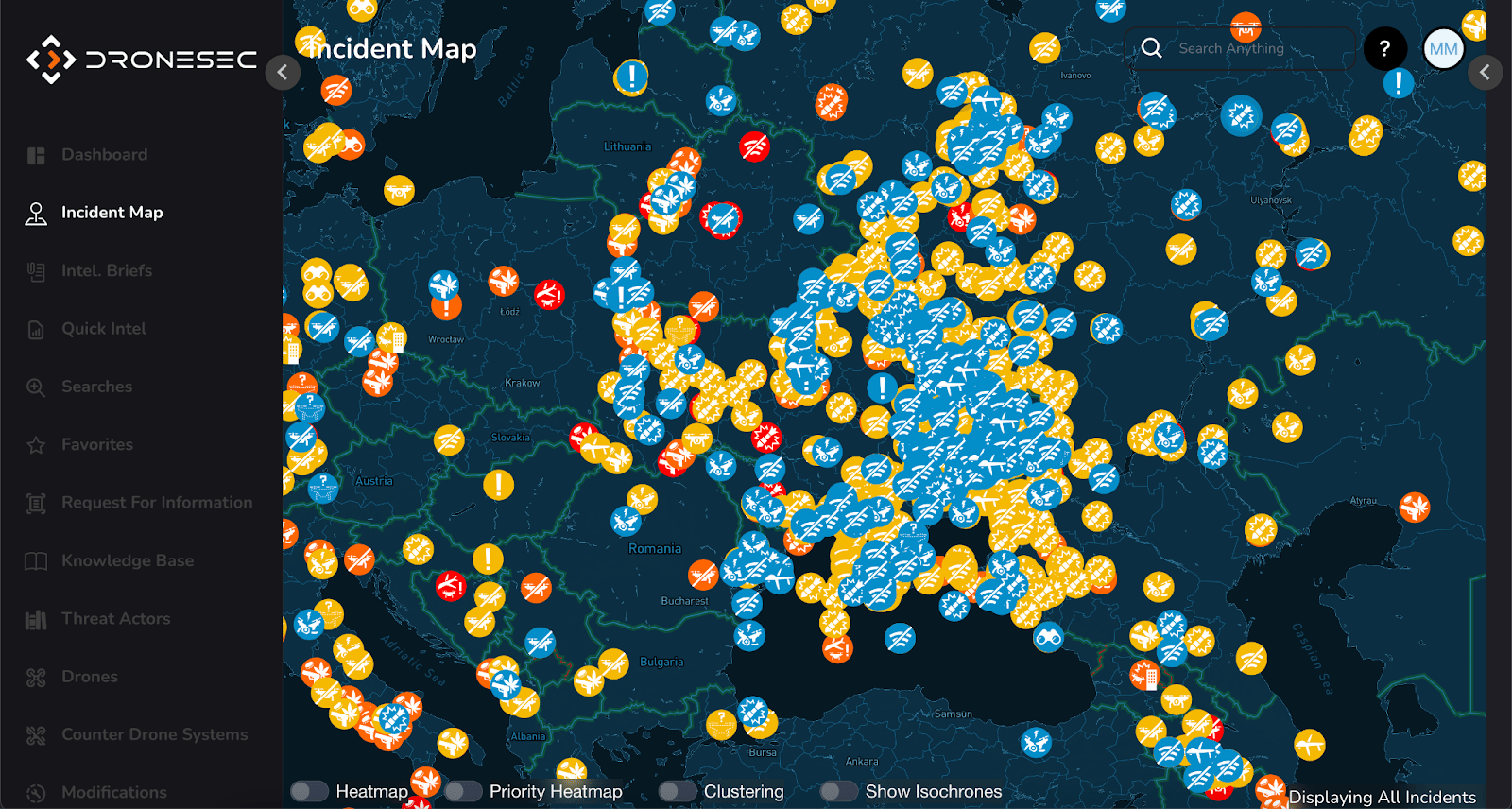
An example of DroneSec’s platform, showing an incident map over Ukraine that populates events of note in near-real time.
Underground Operations
Using sock puppets and undercover online operations, they’ve also collected a treasure trove of UAS docs of Russian military origin, including instructional manuals/training guides; counter-UAS techniques, UAS vulnerabilities and communications protocols.
Users Today
The unclassified system is currently utilized by several units across the Ukrainian Armed Forces for consolidating OSINT data on Russian UAS/C-UAS. NATO and FVEY partners use the system to create realistic training scenarios, test & evaluation (T&E) events, supply chain targeting and build better countermeasures.
Interested in the platform? Contact [email protected] or visit www.dronesec.com.
BUSINESS LUNCH TOPICS: What our reporting shows!
Verkhovna Rada adopts three out of four ‘Defence City’ draft laws
By: Oksana Zabolotna and Oleksandr Matviienko
Lawmakers have passed, in the first reading, three out of four draft laws ( #13420, #13421, and #13422-1) to establish ‘Defence City,’ a special economic designation for defense companies. Read our detailed coverage on the pros and cons of the initiative here.
Lawmakers are expected to have a series of meetings with defense company representatives before the draft laws move to the second reading. Voting on the second reading is planned for August.
The legislation is meant to ease the work of defense companies, which can operate on the edge of current regulations, MP Halyna Yanchenko, one of the initiators of the draft laws, told Counteroffensive.Pro.
Why it’s important: These amendments introduce financial incentives for local governments that host relocated defense companies, encouraging them to develop the necessary infrastructure to support these facilities.
They also create favorable conditions for importing critical equipment and materials required for the operation and expansion of existing defense companies. Overall, these changes will enhance the financial and economic environment for scaling up defense production and implementing technological innovations.
Proposals:
All three draft laws call for accompanying amendments to the Customs and Budget Codes. For a period of ten years, the legislation would provide members of Defence City with:
exemption from corporate income tax, provided that profits are reinvested within defense industry the following year;
exemption from land tax;
exemption from real estate tax;
exemption from environmental tax.
From 2026 to 2028, 50% of personal income tax from relocated Defence City participants will go to the budget of the host community.
To protect local budgets, personal income tax from defense companies is excluded from equalization transfer calculations for both sending and receiving communities.
During martial law and for one year after, customs procedures for defense-related entities will be simplified.
Goods can be placed under different customs regimes (e.g. import, temporary import) with simplified procedures. This will require only an authorization and customs declaration, skipping some regular Customs Code requirements.
Document submission and conformity checks will be easier and may happen without on-site inspections.
Customs will receive information about recognized Defence City companies through a streamlined process.
Initiator:
A group of 130 Members of Parliament from the ‘Servant of the People’ and ‘Holos’ factions, led by Davyd Arakhamia.
What’s next:
The draft laws are being prepared for the second reading.
Teletactica secures $1.5 million for battlefield comms
MITS Capital and Green Flag Ventures have invested a total of $1.5 million in Teletactica, a Ukrainian producer of jamming-resistant communication equipment.
“The investments are meant to support Teletactica's overall growth, which means strengthening what the company is doing in Ukraine now and helping it prepare for eventual growth outside of Ukraine as well,” Deborah Fairlamb, founding partner at Green Flag Ventures, told Counteroffensive.Pro.
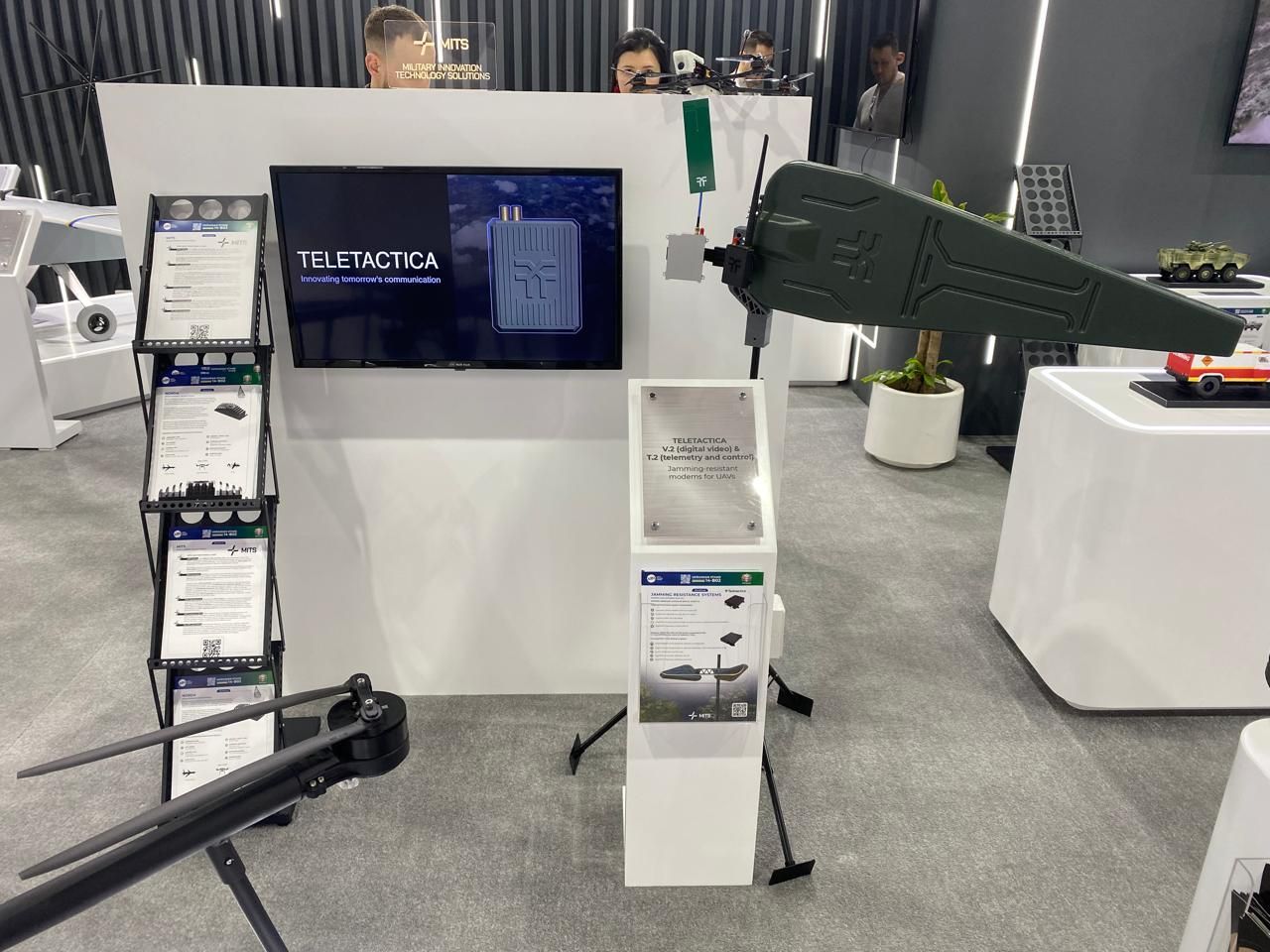
Teletactica equipment. Photo taken from developer's LinkedIn page.
Investment firms typically do not disclose the percentage of investments, but MITS Capital led the round, according to Anton Melnyk of MITS Capital. Funds will also be allocated to establish a new R&D center, he said.
Teletactica produces secure communication hardware to work in highly EW-jammed environments and GPS-denied territories. The company is now in the process of adopting NATO codification. Its products can be used in both ground and aerial drones, as well as other unmanned platforms.
Odd Systems teams up with Denmark’s Terma to develop an AI-powered drone interceptor
Ukrainian defense company Odd Systems is set to develop a low-cost AI-drone interceptor with Terma, a Danish defense and aerospace manufacturer.
“We are aiming to develop software and hardware platforms that can be adapted to different carriers for intercepting different types of targets,” Yaroslav Azhnuik, co-founder of Odd Systems, told Counteroffensive.Pro.

Odd Systems FPV drone Lupynis-10-TFL-1. Photo provided by the company.
New Swedish investment fund for Ukrainian miltech
Swedish entrepreneurs have launched Varangians, an investment company that aims to invest in Ukrainian defense startups. The total amount of planned investments is up to €10 million.
Each startup can receive between €100,000 and €1 million, said Andreas Flodström, chairman and co-founder of Varangians. The first deal will be announced by the end of July, he said.
They plan to invest in Ukrainian and European defense companies that support and assist Ukraine. Investments will focus on defense innovations, prioritizing military and civil defense. Dual-use products could also be included, but is not the primary focus, the company said.
"It could be unmanned systems, electronic warfare, demining, information warfare, and cyberspace," Flodström told Counteroffensive.Pro.
The deal between Ukrainian Frontline and German Quantum Systems:
Quantum Systems, a German drone manufacturer, has purchased a 10 percent stake in Frontline, a Ukrainian defense robotics startup. It’s one of the largest investment deals in Ukraine's defense sector, which is estimated at $1 million, according to Forbes.
Frontline produces reconnaissance drones, bombers, and turrets. The agreement includes strategic, commercial, and technological cooperation, but doesn't contain obligations to use specific technologies in particular products from either side, Yevhen Tretiak, СЕО of Frontline, told Counteroffensive.Pro.
"Our main focus and priority is Ukraine and developing current production capabilities. If opportunities arise to scale production for the Defense Forces based in partner countries, we will consider them as a priority," he said.
The agreement also gives Quantum Systems the right to increase its stake to 25 percent next year.
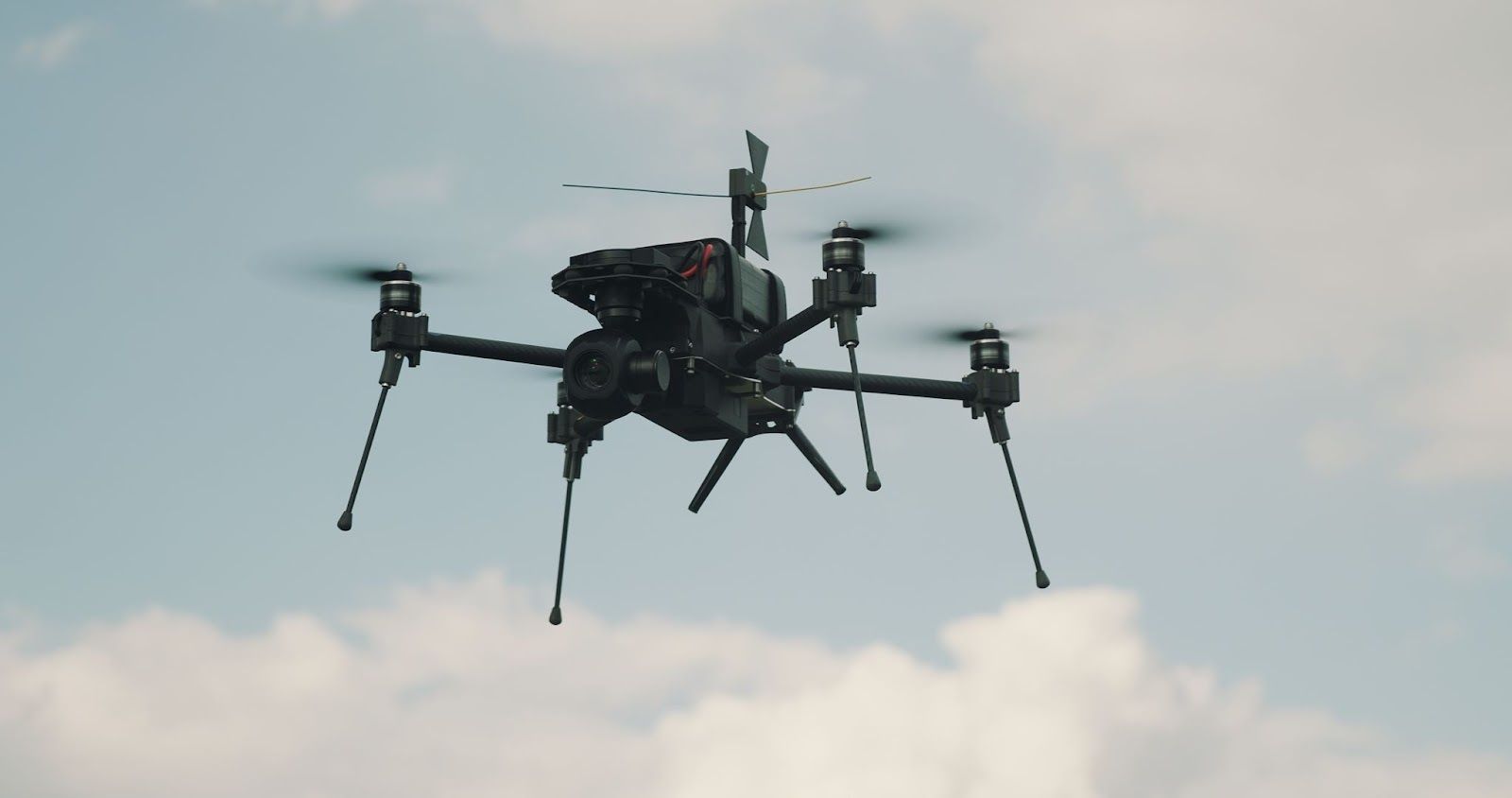
Reconnaissance drone Zoom. Photo provided by Frontline
ON THE MOVE: Professional movement, promotions and industry news.
Know someone in the defense tech space who has made a professional move? Drop us a line at [email protected]!
Mariia Cherpak started a new position as a business & operations associate at the Berlin office of Quantum Systems, a drone maker. She is also an ambassador in the Women in Defense Tech community.
Denys Shmyhal has been appointed as the new Defense Minister of Ukraine. He previously served as prime minister.
Rustem Umerov, formerly the defense minister, has now become Secretary of the National Security and Defense Council of Ukraine.
30 SECOND ELEVATOR PITCH:
Warm Mind is a developer of smart detonators for mines. The manufacturer offers detonators that can be activated by touch or movement nearby. The detonator can operate autonomously for up to 30 days, after which it can either detonate the mine or deactivate it. The startup plans to test 300 units by the end of the year.
“We are looking for $500,000 in investment for further development and testing of detonators for the integration of a jump-up mechanism for larger area coverage, device-to-device networking, and a friend-or-foe recognition system,” said Andrii Nikolaychuk, co-founder and CEO of Warm Mind.
MUST READS:
Brave1 has launched the ‘Test in Ukraine’ platform, which aims to provide foreign companies the opportunity to test their products in Ukraine.
A U.S. defense contractor has developed a Shahed-like kamikaze drone called LUCAS (Low-Cost Uncrewed Combat Attack System). SpektreWorks unveiled the drone at the Pentagon on July 16.
The Khartiia brigade has successfully evacuated an injured soldier using a TOR-800 ground drone.
Russia has begun developing the Mi-80 helicopter to replace the Soviet-era Mi-8 and Mi-17. Moscow aims to replace all Mi-8s by 2030.
The Ministry of Strategic Industries has been merged into the Ministry of Defense, said Denys Shmyhal.
Ukraine and the U.S. are discussing a possible ‘megadeal’ on the purchase of American weaponry. In exchange, Kyiv would sell its UAVs to the U.S., said President Zelenskyy.
China has copied the U.S. military’s autonomous V-BAT drone. Both drones feature a design that enables vertical take-off.
Thanks to our media partner:
